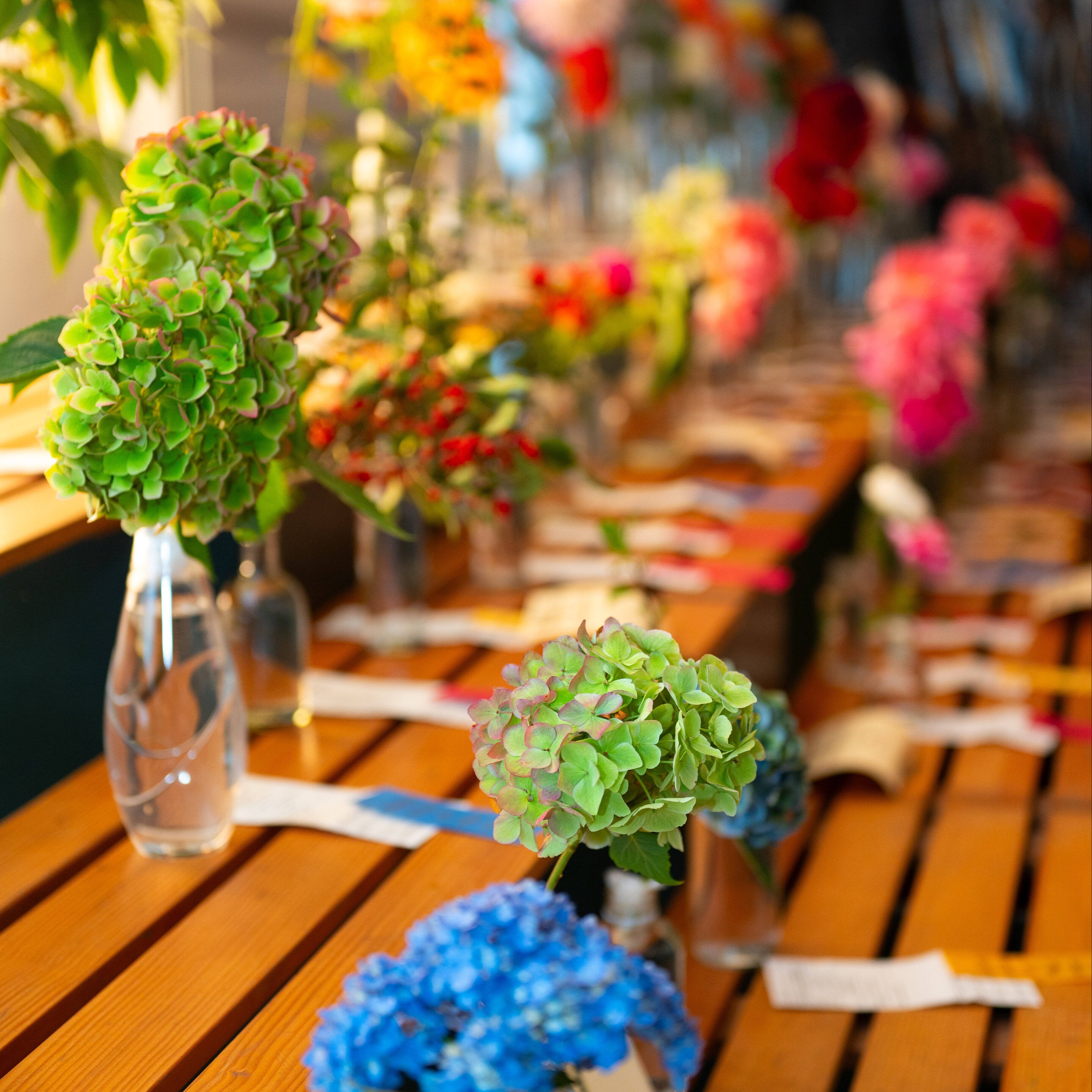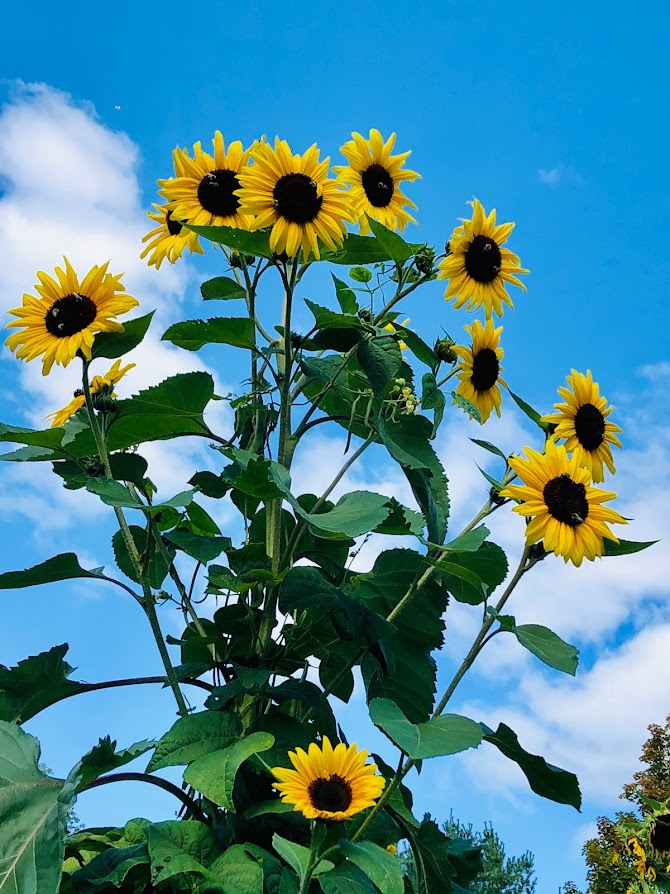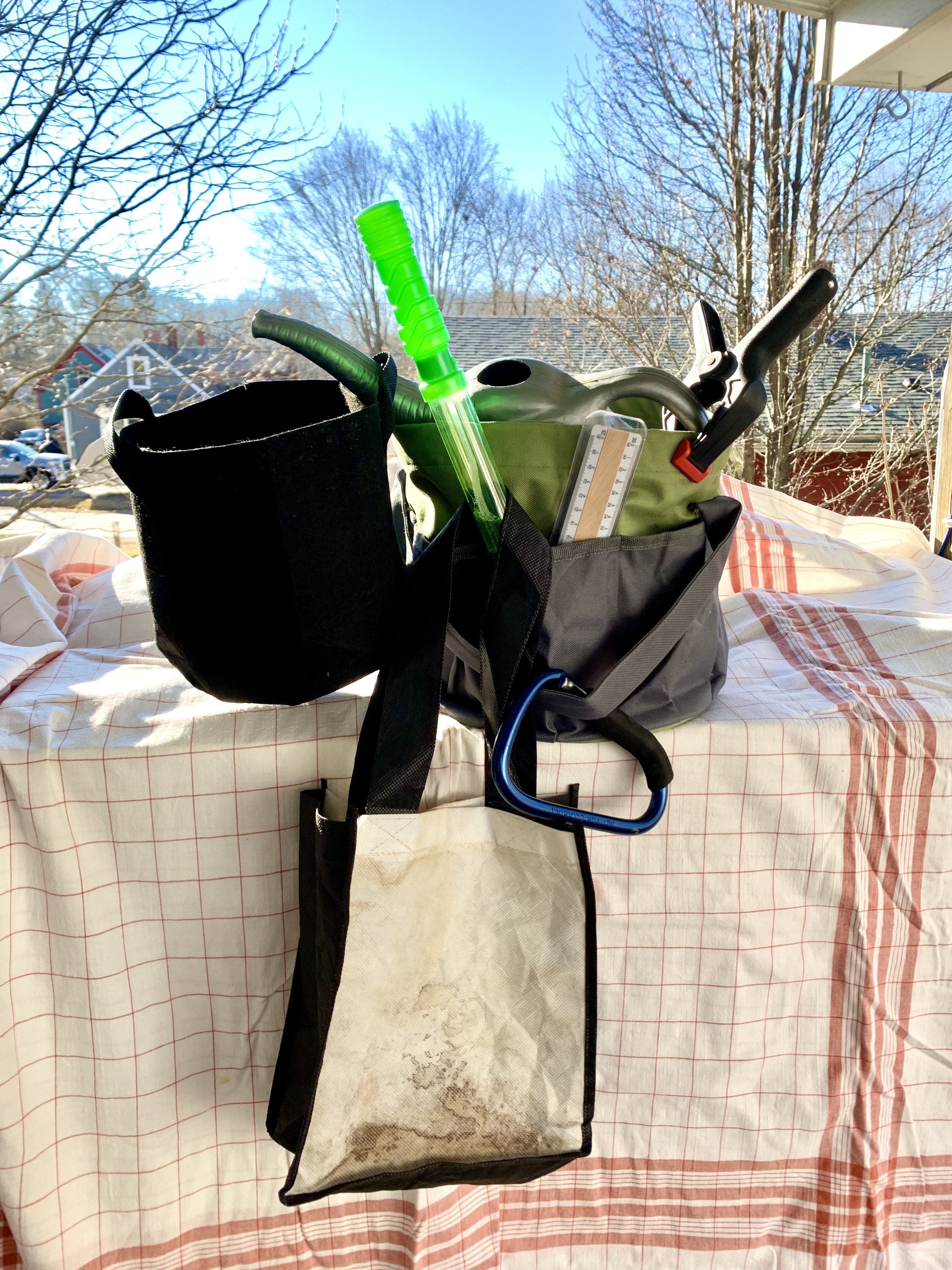Isn’t it a bit odd that we so often talk about outdoor garden design, but rarely even mention designing with houseplants? Do you deliberately place your plants within your house, or do you become enamored with a new plant, bring it home and plop it wherever? With a bit a knowledge and a few design tips, your houseplants can amplify the beauty of your interior.
CONSIDER YOUR PLANTS’ NEEDS FIRST
Most houseplants can go days or weeks without having all their exact needs for filled. If you’re having a party or celebrating a holiday, feel free to utilize them to assemble a table scape or corner vignette. Do make a point of observing their health and wellbeing while not in their usual location.
Special events aside, your plants are more impactful assembled into groupings. Plants should be organized by family groups or like needs.
GROUPINGS
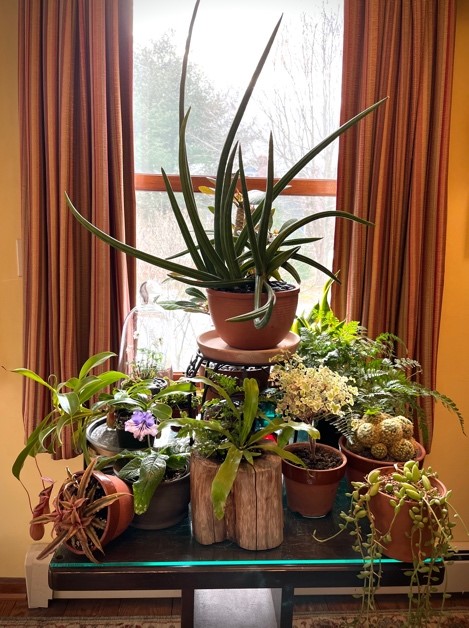 Follow the same advice that is given for planting container plants for outdoors- gather pots into displays of three, five or nine. Odd numbers of potted plants together look better than even numbers.
Follow the same advice that is given for planting container plants for outdoors- gather pots into displays of three, five or nine. Odd numbers of potted plants together look better than even numbers.
Use the same ‘thrillers, fillers, and spillers’ concept—place a tall, upright houseplant next to a full, bushy plant and a trailing, hanging plant.
Think carefully about the texture of each plant. Place small, fine leafed plants with big leafed plants. Soft fuzzy leaves opposite hard, waxy foliage.
Contemplate the overall color scheme of your plant and pot combination in relationship to the space they will occupy. Consider placing your richly colored plants in dark pots against light colored walls. Feature lighter hued foliage plants in lighter colored containers in the vicinity of dark colored or low-light spaces to amplify the impact of plants appeal.
LIFTS & LEVELS
If you were laying out a buffet, you would use lifts and levels to make the food look more appealing- do the same for your display of houseplants! Place featured plants up higher than filler plants, giving each plant its own visual space.
Use what you already have around the house: candle holders, books, cake stands, boxes, trivets and the like. Anything stable. This is often a good way to be sure every plant gets its fair share of light from a window without taking up all your table space.
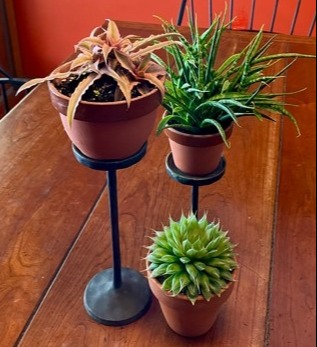
USE MIRRORS TO AMPLIFY LIGHT (AND DRAMA)
Place your plants near or on mirrors to increase the amount of natural light that they receive and to double the plants visual impact.
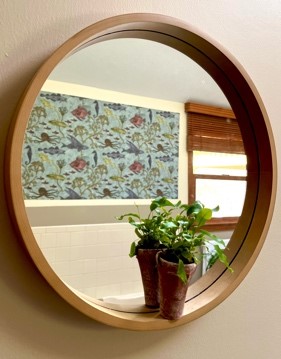
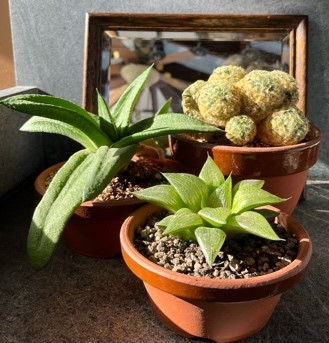
Consider placing a mirror behind your plant or sitting the pot directly upon the mirror. Flea markets are a great place to find mirrors specifically for this purpose. The ambient light will be in the room will be reflected back onto the plant, allowing it to thrive in locations it could not survive without the extra light.
USE YOUR VERTICAL SPACE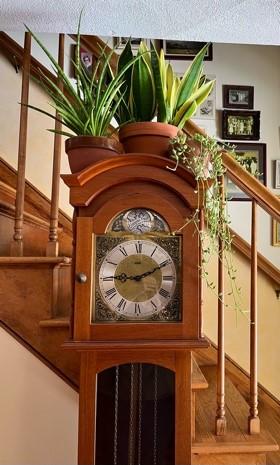
Hang your plants up. Use wire ring, wall mounted plant pot holders, wall clips, pots with hangers permanently install, macramé plant hangers or temporary orchid pot clips. Mount water tubes on your wall to root plant such as philodendron.
Install a wall shelf opposite a window or put plants on a bookcase. Consider, however, that they are accessible to you to so you can water them and give them the care they need. Also use waterproof saucers under plant pots when placing them on wooden surfaces to protect you furniture.
PLACE PLANTS NEAR SEATING AREAS
Even a small pot of forced bulbs or the most common of houseplants look much more dramatic when looked upon from up close! Placing your plants where you can view them regularly will substantially increase your enjoyment of plant ownership.
Placing your houseplants near where you often sit has the additional benefit of increasing your attention to them. It is much easier to ward off a problem such as scale or mealy bug infestations early on before they become endemic.
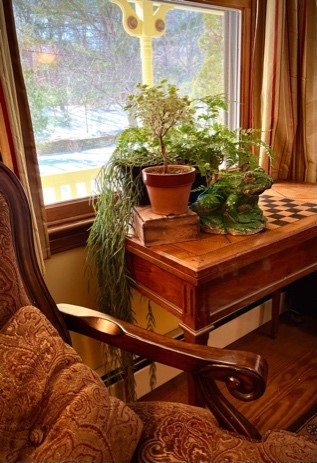
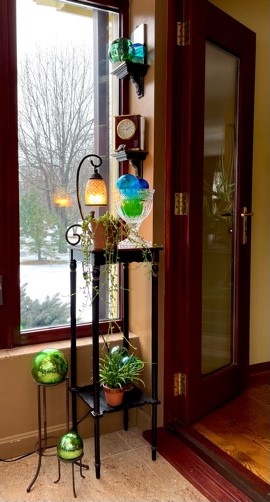 DEAD ZONES
DEAD ZONES
A statement plant placed in a dull corner of can dramatically warm up the ambience of your room. Do be careful that the location in which you place the plant can support the plants needs. Be particularly careful about placing a plant near a door where it will receive periodic blasts of cold or hot air.
TUCK-IN VIGNETTES
Consider even the smallest or narrowest spaces to place a few plants. Houseplants mix well with knickknacks and trinkets. Perhaps you have brought some garden statuary or gazing balls in from your garden for the winter—put them to work inside for you!
USE GLASS VESSELS
Plant in a fully enclosed terrarium for minimum care of plants that prefer consistently moist soil and a humid environment. You can plant directly into a glass container, terrarium or Warden case. Be sure to add a layer of rocks, then horticultural charcoal on the bottom before adding soil if you are planting directly into a vessel to provide drainage for the plants.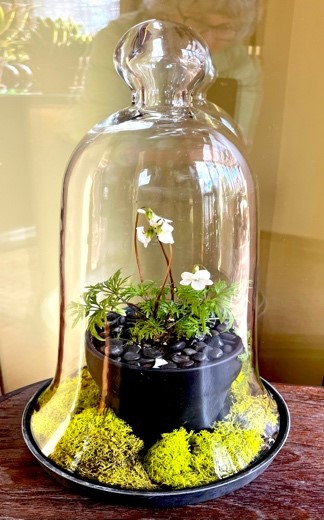
Another option is using a bell jar or a cloche to cover your high humidity plant. Place your regularly potted plant on a saucer, then cover it with the glass. Placing moss, stones, shells Or other decorative items under the cloche will add to the appeal of the array.
A little thought about the placement of your houseplants along with a few items you probably already have around the house will dramatically improve the beauty and impact of your plants. Hopefully, designing and arranging your houseplant will enhance your enjoyment of plant ownership.
Learn more about plants, gardening, and horticulture in an upcoming class at MHS!



